Archived Mold Remediation Blog Posts
Protect Your Property with Mold Remediation Services
9/6/2024 (Permalink)
Mold can be a serious issue for both residential and commercial properties. It thrives in damp, dark environments and can spread quickly, damaging your home or business while potentially affecting the health of those inside. At SERVPRO of Indianapolis West, we specialize in fast and effective mold remediation to protect your property and restore peace of mind.
How Mold Develops Mold often appears after water damage, such as flooding or leaks, when moisture lingers in walls, ceilings, or floors. Even high humidity can promote mold growth, making it essential to address water issues promptly.
Signs of Mold Not sure if you have mold? Here are a few signs to look out for:
- Musty odors
- Visible spots or discoloration on walls, ceilings, or floors
- Increased allergic reactions, like sneezing or itchy eyes
- Peeling or warped paint or wallpaper
Our Mold Remediation Process SERVPRO of Indianapolis West uses advanced techniques to tackle mold problems. Our process includes:
- Inspection and Assessment: We start by identifying the source of moisture and the extent of mold damage.
- Containment: To prevent the mold from spreading, we isolate the affected area using barriers and negative air pressure.
- Air Filtration: We use HEPA filters to remove mold spores from the air, improving indoor air quality.
- Removal of Mold and Contaminated Materials: We remove mold-infested materials and treat surfaces with antifungal and antimicrobial treatments to eliminate spores.
- Cleaning and Restoration: Finally, we clean and restore your property, ensuring that mold doesn’t return.
Prevent Future Mold Growth After remediation, it's important to control moisture levels in your property. Consider using dehumidifiers, fixing leaks promptly, and ensuring proper ventilation to reduce humidity.
If you suspect mold in your home or business, don’t wait—contact SERVPRO of Indianapolis West for professional mold remediation. We're here to protect your property and health with expert services you can trust.
Where Mold May Grow In Your Home
7/28/2022 (Permalink)
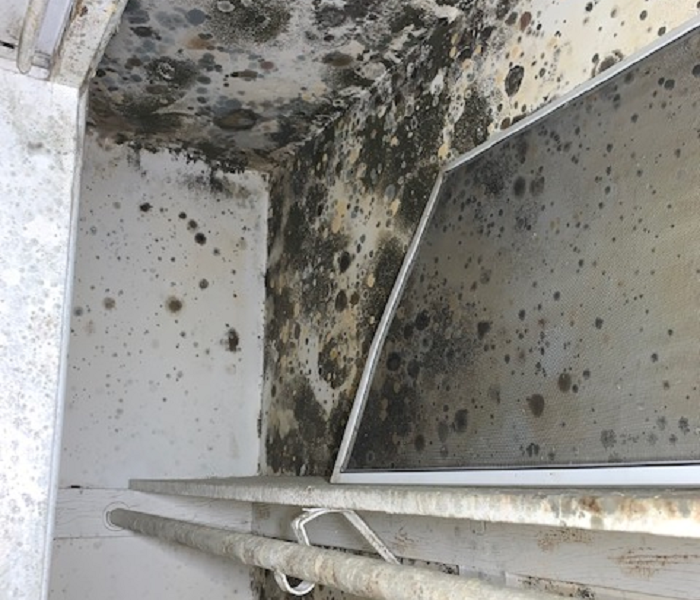 Mold can quickly get out control and spread.
Mold can quickly get out control and spread.
Top Hidden Places Where Mold May Grow In Your Indiana Home
While there are common places where most people find mold, like around showers and tubs, there are many places in a home or business where mold be hidden. These hidden areas can lead to further damage from mold, which is why it’s essential to check them regularly for any signs of moisture or condensation. In no particular order, here are the top places mold can grow in a home.
Crawl Spaces
Most homeowners never look into their crawl spaces, but they might want to. Crawl spaces can easily collect moisture from water seeping through the foundation to moisture rising from the ground. A crawl space should have a vapor barrier on the ground to keep moisture from rising. A crawl space also needs adequate ventilation to allow any water that may collect to flow out. Failure to keep the moisture out from your crawl space can result in mold growth on the exposed framing of your home. The mold can eventually lead to excessive damage to all wood surfaces and make its way into the house.
Basements
Basements are similar to crawl spaces, but they are open and exposed to the rest of the house and can spread mold quickly throughout your home via the air ducts and open doors. If your basement smells musty, then you either have mold growth already happening or a high possibility of it occurring. Since many basements are furnished and carpeted, more areas in a basement are perceptible to mold growth compared to a crawl space.
Bathrooms
A good ventilation fan is vital in a bathroom for odor and moisture issues. This is especially true with bathrooms where there are showers in them. While everybody loves a hot shower, a hot shower also creates a large amount of moisture that can lead to mold growth. Another area where mold may grow is behind toilets and under sinks with cabinets. Moisture can condensate on the toilet tank and wall, causing mold to form on the wall.
Under the Refrigerator
Some refrigerators have drip pans where water can collect. If dust or debris gets into the drip pan, mold can start to grow. Water can also leak from the water line or drip from the cooling coils. It’s a good idea to check every few months and keep it clean by sweeping and vacuuming regularly.
Around the Washing Machine
The washing machine and the dryer are both susceptible to mold growth. If the dryer vent hose does not properly vent out the steam from the drying clothes, it can accumulate in the hose or around the back of the dryer, causing mold to grow. Washing machines can also leak and drip down under the machine where dust can gather, creating the perfect home for mold growth. Just like the refrigerator, cleaning the areas and checking underneath them often is essential.
Top Ways to Reduce Mold Growth In Your Home
So now that you know where mold growth can happen, how can you reduce the likelihood of mold growing in your home? First, as stated above, cleaning your house of dust is essential by regularly sweeping and vacuuming. While dust doesn’t necessarily cause mold to grow, dust and moisture can.
The most important thing to reduce mold growth from happening in your home is to control and eliminate any moisture problems in your home. Check for leaks and condensation around sinks, appliances, and air conditioning units. If you have a musty basement, ensure that your sump pump operates correctly. You may also want to consider a dehumidifier to reduce the moisture in the air. If you have water seeping in from the basement walls or crawl space foundation, you’ll want to look at the drainage around your home.
Mold Remediation in Indianapolis, Indiana
If you should experience mold growth and damage to your Indianapolis-area home or business, call the mold remediation professionals at SERVPRO of Indianapolis West at 317-243-3149. The professionals at SERVPRO of Indianapolis West have the specialized equipment, professional training, and certifications to treat and remediate mold in your home or business quickly.
Is Their Mold Growing Under My Carpet?
11/18/2019 (Permalink)
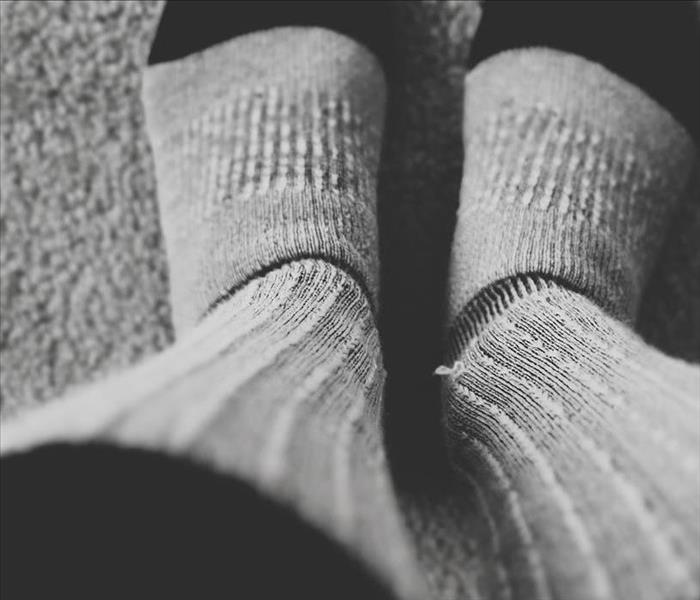 Is Their Mold Growing Under My Carpet?
Is Their Mold Growing Under My Carpet?
Usually, when homeowners discover mold growth in their home, it is on the ceilings or walls or tiles. Typical places where mold is found most often are in bathrooms, basements, and kitchens. There is however one place that many people overlook and that is under carpets. Below we will go over signs that may indicate mold growth under your carpets, what causes it, and how to get rid of it.
Signs That There May Be Mold Under Your Carpet
While mold growth can be hidden from view under your carpet, there are some noticeable signs that it may be there. The first sign to look for, or in this instance smell for, is musty odors. As mold grows, it releases spores and musty odors into the air Some areas where musty odors are most commonly found are in basements, crawl spaces, and bathrooms. If you smell musty odors, then there is a good chance the there may be mold growth nearby. The musty odor will also get stronger the closer you are to the mold. So, if you smell musty odors around your carpet, you may be able to find where the mold is by where the smell is strongest.
Another sign of possible mold growth is an increase in allergy symptoms. Mold tends to exacerbate common allergy symptoms like coughing, watery eyes, and soar throat. If you are suffering from persistent allergy symptoms, you may want to check your home for mold and/or musty odors.
Another sign that there may be mold growth under your carpets is if the carpet is persistently damp or wet. This could be the result of a leak, excessive moisture, or carpet near a high traffic area like the front door. A carpet that stays damp or wet for more than a day can be susceptible to mold growth. It’s important to dry out any carpet quickly to prevent mold from occurring.
The last and most obvious sign of mold growth is the changing of colors of your carpet. Mold in the carpet can grow and make your carpet look black, green, blue and a rainbow of other colors The mold growth can eventually eat away and destroy the natural fibers of the carpet.
What Causes Mold to Grow in Carpets
In order for mold to grow, it needs three things. The three things are moisture, spores, and a food source. As stated above, the natural fibers and materials of carpets are a great source of food for mold. Just add moisture and with spores almost always present in our environment, you have the perfect home for mold to grow. The other factor that helps mold grow is darkness which is why many times mold will start to grow under the carpet.
What to Do If You Find or Suspect Mold Growing in Your Home
If you find mold growing in or under your carpet or anywhere in your home, it’s important to call a mold remediation company as soon as possible. A mold remediation company, like SERVPRO of Indianapolis West, has the expertise and tools to stop mold in its place and take steps so it won’t happen again. They will also examine the rooms and areas around the mold to ensure it hasn’t spread. Without proper care and remediation, mold can continue to grow and destroy your carpet and home. If you find mold or suspect mold is growing in your Indiana home, give SERVPRO of Indianapolis West a call. They are available 24/7 and will take care of your mold problem before it gets worse.
Top Things to Know About Mold
11/28/2018 (Permalink)
 Top Things to Know About Mold
Top Things to Know About Mold
We’ve all have seen mold before. Whether it’s in a bathroom, on an exterior wall, in the fridge on some food, or other damp areas; we’ve all experienced mold before. While many people are quite familiar with mold and battling it in their Indianapolis home, most may not know everything about this nuisance. In this blog, we go over some of the top things most people may not know about mold in their Indiana businesses and homes.
Mold Is Practically Everywhere
Mold at it’s smallest form travels as microscopic spores through the air we breathe. It is in the air outside our home and inside our home. There is no simple way to remove all traces of mold from your home. It is naturally occurring and exists everywhere. While there is very little you can do to keep mold spores from entering your home, you can take steps to keep those spores from colonizing and growing into a bigger and more visible mold growth problem. Keep the air circulating throughout your home and eliminate any moisture problems.
Mold Can Grow In Many Places
The key to mold growth is moisture and organic material. In the home, organic material can include carpeting, wood framing materials, drywall, cardboard boxes, clothes, wallpaper, and furniture. In the forest, mold grows or feeds off of dead organic matter like dead trees and fallen leaves. Mold can also grow from the dust on a concrete floor or in your air ducts. If there is organic material and moisture present, mold will find a way to grow.
Moisture is Mold’s Best Friend
While you can’t eliminate organic material from your home, you can take away the fuel that causes mold growth -- moisture and standing water. The reason why you will often find mold in basements, bathrooms, and crawl spaces is because that is where you also tend to find moisture in the air. Since mold spores and organic material are present in most environments, including homes and businesses, it is just a matter of introducing moisture to cause mold to grow.
In basements, you can reduce the moisture with a dehumidifier, In a crawl space, you can line the bare ground with a moisture barrier lock i.e. plastic sheeting. With bathrooms, you can make sure to keep the exhaust fan on when showering and leave the bathroom door open afterward to allow the moisture to dissipate.
If you should have a basement flood or a roof leak or a broken water pipe, it’s important to get the water and the moisture out quickly to inhibit mold growth. Since water can get into areas that may not be so easy to dry, most homeowners and businesses contact a water damage restoration and mold remediation company, like SERVPRO of Indianapolis West. They have the equipment and the expertise to remove all of the water and all of the moisture and treat the areas to prevent mold from taking hold. If mold growth has occurred, they can also remediate the mold and eliminate the moisture problem.
Mold Has a Distinct Smell
Mold can’t always be spotted with the naked eye. Sometimes it is hidden underneath or deep within carpets. Sometimes it starts inside walls or in air ducts or in other hidden and unseen areas of your home. If you don’t see the mold occurring, the other tell-tale sign of the presence of mold in your home is the smell of mold. Mold has a distinct musty smell that many may acquaint with a basement or crawl space or wet forest. The smell is the result of the mold eating and metabolizing the organic material it is feeding off of. The material can include most organic matter like wood, carpeting, clothes, cardboard boxes, drywall, and furniture. In the forest, mold feeds off dead organic matter like fallen trees and dead leaves.
Molds Produce Allergens and Irritants
According to the EPA, mold commonly causes allergic reactions in people. These molds tend to be found outdoors and are usually seasonal. Fall allergies tend to be the result of mold from the falling and dying leaves. As they fall to the ground and pile up, the dead leaves hold moisture which can boost the presence of mold in the air. Reactions from mold can include a runny nose, sneezing, red eyes, skin rashes, and sore throat. These symptoms are the typical ones people experience but do not include all reactions that people may experience when exposed to mold.
Call the Mold Remediation Professionals
If the mold should get out of hand or you discover mold growth in your basement or crawlspace, call the mold remediation experts at SERVPRO of Indianapolis West. They have the expertise and equipment to safely remove and remediate your mold problem. If your home should suffer flooding or water damage, it’s important to quickly remove the water and moisture to reduce or eliminate potential mold growth. SERVPRO of Indianapolis West can also help homeowners and business owners out with water damage restoration. Give them a call any time and any day for your water damage and mold problems.
How to Remove Mold from Basement Walls
9/26/2018 (Permalink)
 How to Remove Mold from Basement Walls
How to Remove Mold from Basement Walls
When it comes to removing mold from a basement wall, there is no one answer. There are a lot of factors that go into determining if you can remove the mold and how to do it. But before we dive into determining if mold can be removed from a wall, we first must understand what mold is and how it grows.
What is Mold?
Mold is a living organism, or more precisely, it is a fungus. It tends to grow in dark and damp environments and it feeds on cellulose. Cellulose is an organic material that can be found abundantly in drywall, cardboard boxes, carpets, wood, clothes, and curtains. You won’t usually find mold on metals and plastics since they don’t contain cellulose. A quick look around your basement and you can see that there are many places where mold can grow if the conditions are right.
Can Mold Be Removed from Walls?
Now that we know what mold is and how it grows, can it be easily removed from your basement walls? Well, it depends on what your walls are made of and whether they are painted. If the mold is growing on painted drywall or painted concrete, then you may be able to wipe the mold off. You can use a household cleaner that is made to remove mold and spray it down, scrub it off, and wipe it clean.
If the mold is found growing on unfinished drywall, then you might have a problem. Due to the porous nature of the drywall, the mold may be embedded into the drywall and won’t be able to be wiped clean. It is usually best to remove the drywall with the mold and replace it with new drywall.
With unfinished concrete walls, you obviously can’t easily remove and replace the concrete walls like you can with drywall. With concrete walls, you will want to scrub off any mold you can see and then soak the area with a mold cleaner. The cleaner should soak into the concrete and kill off any mold or mold spores that are hiding out underneath the surface.
Household Cleaners May Not Be Good Enough
If you walk down the household cleaners aisle at the grocery store or look up DIY mold cleaning solutions on the web, you’ll notice there are a lot of solutions and recipes to clean/kill/remove mold. While these may seem to do the job at first, most do not remediate the mold problem. Weeks later, the mold can return. Even the mold that has been killed can be harmful to one’s health if not removed. A quick search on the Internet shows some recommend a bleach solution while others say that it isn’t effective or healthy. So what is one to do?
Other Problems That You Need to Be Aware before Cleaning Mold
If you do try to clean or remove mold from your walls, be sure to wear ventilation to protect yourself. Inhaling mold can possibly be dangerous to your health especially when you do not know what type of mold you are dealing with.
Another problem with trying to clean mold on your own is that by scrubbing and cleaning and removing it, you may be unknowingly spreading the mold spores elsewhere. If you are scrubbing mold off a wall, the mold spores can quickly and easily become airborne and travel to other parts of your basement and home. Think of mold like a cup of fine flour. If you throw that cup of flour in the air, the tiny bits of flour can travel easily through the air and spread everywhere. Mold spores are even tinier (can’t be seen by the human eye) and can spread even easier and farther.
What’s the Best Way to Remove Mold from Basement Walls?
If you discover mold growing on a wall or walls in your basement, the best thing might be to call a professional mold remediation team like the team at SERVPRO of Indianapolis West. The mold remediation team at SERVPRO of Indianapolis West have the tools and equipment to inspect and assess the damage and determine the right steps to take to contain the mold, remove the mold, clean the contents, and restore your basement. They will also identify the cause of the water or moisture and either stop it or provide a solution to stopping it so that it doesn’t cause mold growth in the future.
One last piece of advice if you discover mold in your basement, is to leave it alone. If you disturb the area, the mold spores can become airborne and spread elsewhere. Give SERVPRO of Indianapolis West a call anytime 24/7 if you find mold in your basement.
How to Tell the Difference Between Mold and Mildew
8/12/2018 (Permalink)
 How to Tell the Difference Between Mold and Mildew
How to Tell the Difference Between Mold and Mildew
It’s actually pretty common to mistake mildew for mold or mold for mildew. They both, in fact, are fungi that can be found in homes. They both thrive off of moisture and darkness which is why you usually find them present in bathrooms, basements, crawl spaces, and under sinks. So what is the difference between mold and mildew? Are they both bad for your home? Below we will cover the characteristics, dangers, and treatment of both.
What Does Mold Look Like? What Does Mildew Look Like?
Mildew is a specific type of mold that grows on the surface of things. It can appear as a flat, patchy or powdery discoloration. It’s typically white, brown that can turn yellowish or black as it grows Due to the fact that mildew grows along the surface, it can usually be wiped off very easily. It does become a little more cumbersome to clean when the mildew grows on a porous surface like tile grout or fabrics.
Unlike mildew, mold not only grows on the surface but below the surface also. Mold is usually black, green or blue in color. It can appear either fuzzy or slimy. Since mold tends to grow underneath the surface, once it has been spotted it can usually mean there’s more mold damage beneath the surface. For instance, if you spot mold growing on your wall or ceiling of your Indianapolis home, there’s a good chance that it didn’t start there. It most likely started beneath the surface of the drywall from a water leak or high moisture content. In fact, it could have started somewhere else and spread to your drywall on your ceiling and/or wall.
The Smell of Mold and Mildew
Another sign of mold and mildew is a distinct odor. The smell of mildew is foul and smelly. It can smell like dirty laundry or a forest during the rain. One of the most common times people get a whiff of mildew or the start of mildew is when they forget to remove wet clothes from their washer for a few days.
Mold tends to have more of a musty, pungent smell. Most of us have gotten a little too close to mold and smelled its pungent odor when we’ve opened a food container in our fridge that hasn’t been opened in weeks, if not, months. Mold is a common occurrence on foods due to the fact that mold feeds and grows off of food and organic matter.
Can Mildew or Mold Cause Damage?
Mildew is typically not dangerous or harmful. It can usually be cleaned and removed easily. It may look unsightly but it won’t typically won’t damage grout, tiles, or surfaces. With mildewy clothes, you can simply wash them with detergent and it will remove the mildew. Mildew can, however, cause damage to crops. Mildew growing on crops out in the field can cause the crops to rot or bruise.
Mold, on the other hand, is not so kind to your home. Mold, if caught early, could be removed without having to replace any structure. This issue is that mold usually isn’t discovered until it has caused extensive damage to a home’s structure. Since mold flourishes under the surface, the damage to walls, ceilings, floors, insulation, siding, and framing has already been compromised. In many instances, the structure materials affected needs to be removed and replaced.
Is It Bad or Is It Just Mildew?
If in doubt about whether you have a mildew problem or a mold problem in your home, it’s always best to call the mold remediation professionals at SERVPRO of Indianapolis West. They have the expertise and know-how to identify the problem and take immediate action if it is property destroying mold. It doesn’t take much for mold to thrive and grow and until it is stopped by mold remediation pros, it will continue to cause damage to your home. Call SERVPRO of Indianapolis West for an evaluation of your home’s mold problem.
Where to Check for Mold Growth In Your Home
7/30/2018 (Permalink)
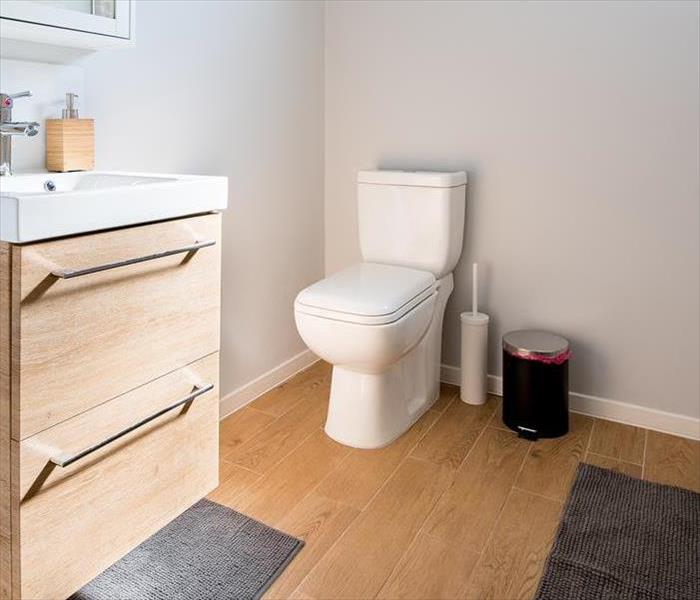 Where to Check for Mold Growth In Your Home
Where to Check for Mold Growth In Your Home
While water can certainly damage the inside of a home, it’s usually the mold that can occur after the water damage that can be much more damaging to a home’s interior. The other danger of mold growth is that it can go days even months undetected due to the fact that it tends to happen in areas we don’t normally look at. But starting today, you can change that. Below we will cover the common areas where mold can grow and that you should check on a regular basis especially if you suffer from water damage.
Check Around and In the Washing Machine
With a washing machine, there are several areas where water can leak and lead to mold growth. The first place to check often is the water connection in the back of the washing machine. Over time, the connection may come loose or be damaged from the washing machine shaking during operation. The other place to check often is the drain of the washing machine. With a front loading washing machine, the drain can usually be found below the washing drum. A lot of times, there is a catch area that can become clogged with fabric and particles. This needs to be checked and cleaned every few months to ensure the water drain out correctly.
The last area to check is around the seal of a front loading washing machine. You’ll sometimes find lost socks and particles inside the seal. If you don’t check and clear this on a regular basis, mold can start to grow on the particles and fabrics that hide inside the seal. If your washing machine smells mildewy, you may want to check around the seal or around the drain. You can also run the washing machine without any close and add some bleach to help kill any spores or mold in the drum, around the seal, and down through the drain.
Check for Water Around the Dishwasher
This should be an easy appliance to check. Every time you unload the dishwasher, check around the bottom for any signs of water. The one difficult area to check for leaks or mold growth is where the water drains out of the dishwasher. The drain is usually located under the dishwasher and runs to the kitchen sink pipes where it drains out. Water can leak from the dishwasher drain connection or the kitchen sink drain connection. The only way to check the dishwasher drain connection is to remove the bottom panel if possible. If this can be done, it wouldn’t hurt to check once a year or so for any signs of water leaks or mold growth.
Similar to the washing machine, mold can grow around the seals. It’s always a good idea to spray and clean the seals around the door with a 10% bleach solution to kill off any spores or mold before it gets worse and starts to smell.
Clean the Shower and Bathtub Regularly
The shower and bathtub are perfect environments for mold and mildew. Due to the fact that they both see a lot of water on a daily basis, there is ample opportunity for mold to grow around them. To keep the mold and mildew at bay, it’s always good to clean them with a bleach solution on a regular basis. Also, make sure that water isn’t spilling out of the shower or bathtub as that can lead to mold growth on baseboards and walls and behind wallpaper.
Another key to keeping mold at bay in the bathroom is to make sure your exhaust fan is functioning properly and to use it whenever you take a bath or shower. The exhaust fan will help remove the moisture in the air and prevent mold from occurring in the bathroom. It’s also a good idea to open the door after and leave the exhaust fan running for a little while to ensure all the moisture has dissipated.
Around the Toilet and Under the Bathroom Sink
Just like the shower and bathtub, water is a daily occurrence and part of the toilet and bathroom sink’s operation. Again, with regular cleaning, you can keep mold from growing. But unlike the shower and bathtub, there are areas that are common to leaks in a sink and toilet. With a toilet, the leak that can be the most dangerous is around the toilet drain wax seal. The danger in this is the water is usually contaminated and the leak can go undetected leading to mold growth and water damage to the floor, ceiling underneath, and walls.
With the bathroom sink, water can leak from the drain or the water connections which can be hidden under the bathroom sink in the cabinet. This area can usually be checked very easily. After you’ve run the sink, check the drains and water lines for any leaks with a dry hand. If you find a leak, you’ll want to fix it before it leads to water damage and mold growth.
Leaky Pipes in the Attic, Crawlspace, and Basement
Not only can leaky water pipes lead to water and mold damage but so can pipes that have condensation. While you can’t check your water pipes in your walls, you can check the exposed ones in your basement, crawlspace, and attic. If the pipes are leaking, you’ll usually find this around the connections. The other thing that can cause mold growth and possibly water damage is condensation on the pipes. This can usually be prevented by insulating the pipes. You can also run a dehumidifier in the basement to reduce any moisture in the air.
Under the Kitchen Sink
The next time you’re washing the dishes in the kitchen sink, check under the sink for any signs of water leaks. The kitchen sink is one of the most used sinks in a home and over time can develop leaks. Also, since many sinks have a garbage disposal, they also have another area where water leaks can develop. Water can drip over time, damaging the floor of the cabinet and the floor of the home. Because it’s a dark area, mold can quickly develop where the water leak has occurred. It doesn’t hurt to occasionally check under there and fix any leaks before further damage can occur.
Check Around the Windows
A common area where you’ll often find mold growth is around the outside of windows. If the water from rain can’t drain, it can stagnate and cause mold to grow which over time can damage the windows and framing. The caulking and sealing around windows can also crack and cause the water to seep inside the home cause further damage and mold growth. During a heavy rain, walk around your home and check all your windows for any signs of water leaks. Perhaps the windows are closed enough, the seals are cracked or broken, or there’s other damage to the window that is causing water to enter the home. The other thing to check is around the outside of the windows for any signs of dampness or mold growth. Sometimes this can be due to a clogged or broken gutter or water not draining away from the window.
Spilled Drinks on Fabric Furniture
Remember that glass of juice that you spilled on the sofa a month ago. While you may have thought you cleaned it all up, there may have been a spot that you didn’t get that resulted in mold growth. Moisture and fabric furniture are a bad combination that can more likely than not, lead to some mold growth. If you should accidentally spill something onto your fabric furniture, it’s always a good idea to not only clean it but dry it. You may find certain cleaners can disinfect and kill any spores to reduce the chance of mold. If you don’t catch it in time, mold growth in fabrics can be very damaging and difficult, if not impossible, to clean up and remove.
The Reason Why Carpeting in Bathrooms is a Bad Idea
Another thing that doesn’t mix is moisture and carpeting. Water or spills can not only soak down into the carpeting but also the padding and sometimes the wooden subfloor. All three of these areas can be perfect homes for mold growth if the water and moisture are not removed. This is why it’s not a good idea to have carpeting in a bathroom or even a kitchen due to all the water and occasional spills. It’s also why you should hang your bath mat up to dry out after using it to prevent any mold or mildew from happening. If you should suffer a lot of water damage to your carpets, you might want to call water damage restoration professionals like those at SERVPRO of Indianapolis West. They can remove the water and dry out the carpeting, padding, and subfloor if needed.
Why Insulation Shouldn’t Get Wet
The last area where mold can commonly occur in a home is in the insulation. If you a leak in your roof or siding, it can get the insulation wet and promote mold growth over time. You usually won’t discover this until you do some renovation work on your home. Although, you may find it if there is exposed insulation in your attic, crawl space, or basement. If your crawlspace or basement smells musty, then the insulation is one area to check as well as the wood framing.
Contact the Mold Remediation Professionals
If you should find mold damage in your home, then you’ll want to call SERVPRO of Indianapolis West as soon as possible. They have the tools and expertise to remediate the mold damage and get your home back in better shape. It’s also important to get any water damage cleaned up as soon as possible to prevent mold from occurring in the first place. The pros at SERVPRO of Indianapolis West can help with that too.
Mold in a Commercial Environment
7/27/2018 (Permalink)
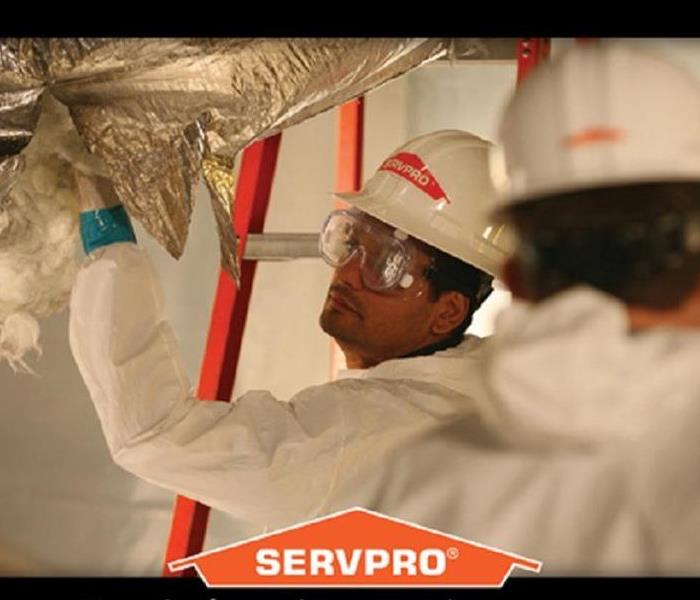 SERVPRO is a nations leader in mold cleanup and mitigation.
SERVPRO is a nations leader in mold cleanup and mitigation.
Mold is natural and can be found just about anywhere and can grow on virtually anything. As long as moisture and oxygen are present, mold can propagate and become a problem. Mold can grow on paper, wood, carpet, food and even on the insulation inside of walls. With the presence of excessive moisture in buildings or on building materials, mold growth is likely to happen. Mold can spread and quickly become an issue if a moisture problem remains undiscovered or unaddressed.
How Do Mold Spores Enter Your Building?
Mold spores move and spread naturally through open doors and windows. We can carry them into a building on our clothes, shoes and hands. The spores cycle between indoors and outdoors naturally and continuously without us even knowing it. When mold spores land on a damp spot indoors, they begin to grow and digest whatever they are on in order to survive.
Outdoors,
Mold plays an important role in nature by breaking down organic matter like old trees, fallen leaves, and even deceased animals. We can thank mold for the life saving antibiotic penicillin and some foods like cheese. Who doesn’t love a good ole grilled cheese sandwich now and then?
Indoors,
Mold growth should certainly be avoided. Problems will arise when mold begins to spread and eat away materials and affecting the structural integrity of a wood framed building. Mold growth can weaken floors and walls as it feeds on the moist organic materials it’s made of. If you suspect there’s mold damage problem to your property, you should call SERVPRO of Indianapolis West for mold remediation.
Mold Growth can Be Hazardous to Your Health.
Potential health concerns to employees and other workers are an important reason to remediate and clean up any existing indoor mold growth. Uncontrolled mold has the potential to cause negative health effects and produce allergic reactions and even asthma attacks.
What to do If You Have Mold in Your Building.
Mold can spread quickly throughout a commercial environment if left untreated. Our expert mold remediation specialist will respond quickly when you call us. Our first step will be to contain the mold infestation and help prevent it from spreading to other parts of the building. Next, we will start the mitigation process, working safely and efficiently to manage the situation.
Why is There Mold in My Building?
It is very important to prevent or correct moisture problems in buildings because mold needs water to prosper. High levels of moisture can be caused many different things, uncontrolled humidity levels, poor ventilation, water leaks from the roof or plumbing and even delayed maintenance or insufficient maintenance to prior water damages.
Some moisture problems in commercial buildings have been traced back to certain construction practices during the 1970s through 2000. Some of these practices have resulted with buildings that are tightly sealed but lack adequate ventilation.
If you suspect a mold problem may exist, look around your environment and ask these questions:
- Are building materials or contents visibly wet?
- Have building materials or contents been wet for longer that 24 hours?
- Is there an existing moisture problem in this building?
- Has there been a water damage recently? If so, was it professional managed and in a timely fashion?
- Is anyone reporting moldy or mildew like smells?
- Is anyone reporting health concerns that they believe may be related to mold?
- Has the building been recently remodeled or the maintenance plan been altered?
If you answer YES to any of these questions you may have a mold problem that needs addressed. Don’t try to clean it up or manage the problem alone, every hour spent on cleanup is an hour lost in revenue and productivity. Call in the professionals of SERVPRO of Indianapolis West and we will respond quickly to manage the situation.
How Fast Will Mold Appear After Water Damage to Your Indianapolis Home?
5/29/2018 (Permalink)
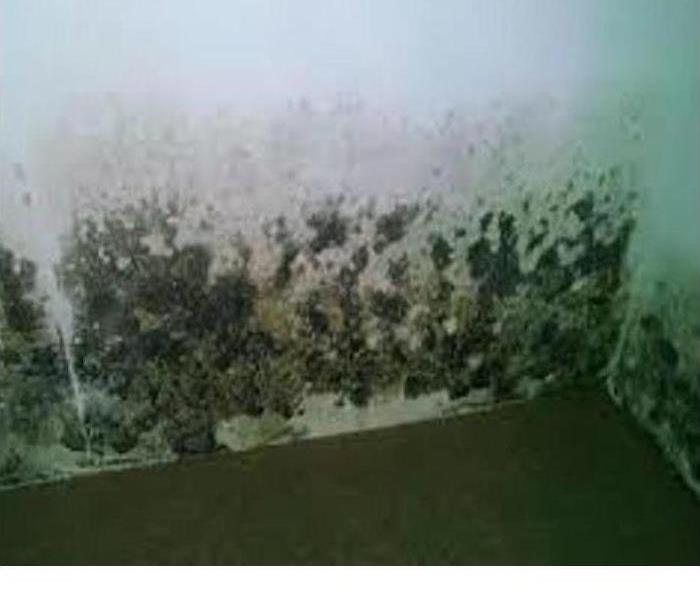 How Fast Will Mold Appear After Water Damage to Your Indianapolis Home?
How Fast Will Mold Appear After Water Damage to Your Indianapolis Home?
While water damage to your home is bad enough, there could be more damage just waiting to happen if get rid of the water and moisture in time. It takes just a little water for mold to grow, so when your home suffers water damage from a flood, broken pipe or faulty sump pump; there are a lot of places that mold can easily grow. So how fast does mold appear after water damage to your home?
It Depends.
There’s really no definitive answer to how fast mold can appear after there has been water damage. If you ask mold remediation experts, you will most often hear 24-48 hours. Many water damage and mold remediation companies have observed this first hand going to homes that have suffered from water damage. On the other hand, these same experts have seen homes that have experienced water damage and have witnessed no mold.
It gets even more confusing when you look at research experiments that scientists have performed to determine mold growth. In a 2006 article in the Journal of Occupational and Environmental Hygiene titled “Controlled Study of Mold Growth and Cleaning Procedure on Treated and Untreated Wet Gypsum Wallboard in an Indoor Environment”, researchers took drywall and immersed the bottom inch in water. The researchers observed the drywall pieces over an 8 week period for mold growth. Some of the drywall was treated with primer paint while others were left untreated and bare.
Surprisingly, the researchers didn’t discover any sign of mold growth until 2 weeks into the test. This is obviously way beyond the typical 24-48 hour window that is typically repeated and many times observed out in the field. These results only tested drywall and in one environment. The results have obviously differed in real situations of homes that have experienced water damage and observable mold growth. So what is different from these situations? To answer that, we have to understand how mold grows in the first place.
How Does Mold Grow or Happen?
Mold is microscopic in size and doesn’t really become apparent until it has grown or colonized. Mold is spread by mold spores which are carried by wind currents and are present in the air outside. About a billion mold spores can occupy a square inch of space. While there are more mold spores present in the air outside, mold spores also exist in our homes but at lower levels. Once mold spores are introduced to the right amount of moisture, humidity, temperature and food source, they begin to grow into what we dread as mold in our home. If left untreated, the mold can quickly colonize and grow out of control.
So what is a food source for mold? Mold needs a dead organic substance to feed off of and grow. If you look around your home, it is full of dead organic materials like wood, fabrics, drywall, insulation, leather, dirt and dust. With the right conditions like a flooded basement or busted pipe, mold can thrive. So how do you stop mold? Is there anything to prevent it?
Stop Mold Growth and Damage Before It Begins
The key to stopping mold growth before it begins is timing. If your home should suffer water damage, call the water damage cleanup and restoration professionals at SERVPRO of Indianapolis West. They will remove all the water and treat any water damaged parts of your home before mold can take hold. If mold has started to appear, they can also remediate the mold as well. While you can’t remove the food source normally, you can take away the water and the moisture thus stopping mold from growing or happening.
Contact SERVPRO of Indianapolis West today for water damage cleanup & restoration, as well as, mold remediation.
Top Ways to Prevent Mold Growth in Your Home
2/27/2018 (Permalink)
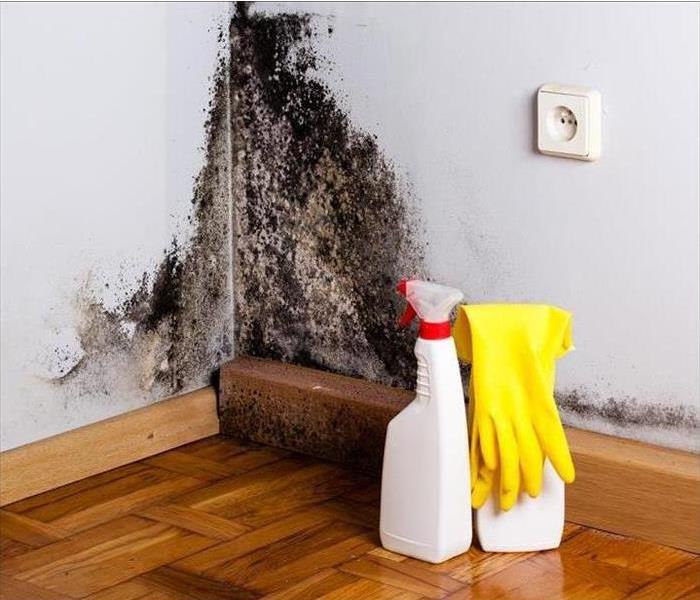 Top 10 Ways to Prevent Mold in Your Home
Top 10 Ways to Prevent Mold in Your Home
No one likes mold in their home. Whether it’s moldy food in the refrigerator, mold in the bathroom, or sudden mold growth from a flooded basement or leaking roof; mold is an unwelcome addition to any home.
While some mold may not be preventable, there are many times that mold in a home can be prevented. Below, we will cover the top ways to reduce the risk of mold occurring in your home.
How to Prevent Mold
Eliminate Standing Water
Standing water is a breeding ground for mold and mildew. Check around your tub, shower, toilet, sinks, dishwasher, and clothes washer after you use them for any leaks or areas where the water may pool up.
Other areas where you may find standing water is around your fridge, windows after a rain, basement doors, and sump pumps.You may also find standing water in your crawl spaces which can lead to mold growth that can go undetectable for months.
To prevent standing water, you can try to seal where the water is coming from or remember to air out or dry the area where the water tends to gather.
Dehumidify Your Basement
Basements tend to be a hotbed for potential mold growth. Due to being below ground with little airflow, basements tend to be damp or high in moisture.
While the typical cool temperatures of a basement keep mold and mildew from growing quickly, the high moisture has the opposite effect.
The best way to prevent mold from growing in a basement is to remove the moisture from the air using a dehumidifier.
Keep the Air Flowing
If you have areas of your home where there isn’t much airflow, this can lead to mold growth. This can include poorly ventilated bathrooms and rooms that are shut off and aren’t used often, like storage rooms and guest rooms.
It’s a good idea to make sure that even if you don’t use certain rooms or areas of your home that you still regulate the temperature and airflow in the rooms. Don’t close air ducts and occasionally open the doors to let fresh air circulate through.
If you have a poorly ventilated bathroom, you want to be sure to open keep the door open to allow fresh air to circulate through.
Check Your Ducts and Air Conditioner
If your air conditioning ducts run through a hot attic or crawlspace, water can condensate and leak around the duct joints. You can seal the duct joints with special tape for ducts.
You also want to check your actual air conditioner and blower. You want to make sure the condensation drain pipe is clear to keep water from pooling.
You also want to make sure the cooling coils are clean of dust and debris as dirty coils can spur mold growth quickly.
Call the Experts for Mold Remediation
If you should discover mold growing in your home, it’s important to act fast and call the mold remediation professionals at SERVPRO of Indianapolis West.
They have all the tools and experience to handle any disaster including mold growth. Contact SERVPRO of Indianapolis West online or call them at 317-243-3149.
How Does Mold Grow in Indiana Homes?
10/4/2017 (Permalink)
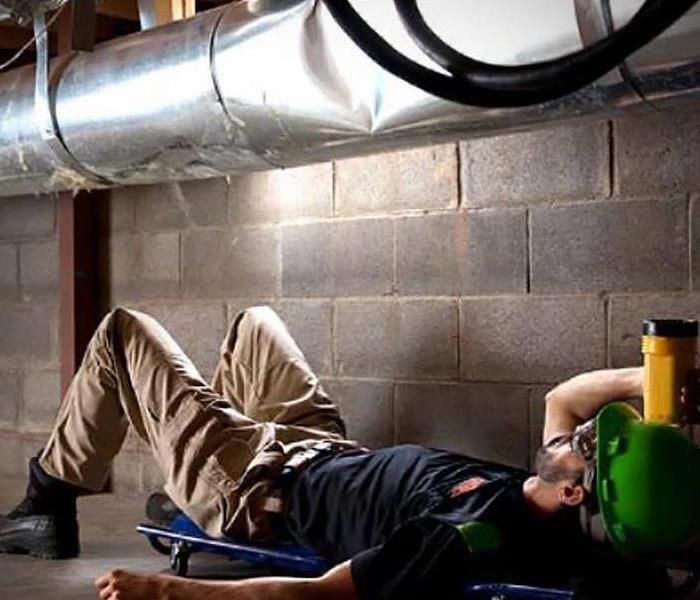 How Does Mold Grow in Indiana Homes?
How Does Mold Grow in Indiana Homes?
Perhaps you are walking through your home and notice a dark spot on your ceiling. Upon closer examination, the area around the spot is soft and it looks like the dark spot is mold. How does mold get into your home and grow? How do you remove mold growth from your home? How can you prevent mold from occurring in your home again? These are just a few of the many questions Indiana homeowners ask when mold is found in their home.
Where Does Mold Growth Most Often Occur in Homes?
Mold growth can occur anywhere in a home. The most common place mold is found, along with mildew, is in the grout between shower and tub tiles. If you don’t wash and clean your shower and tub files, the moisture from the bath and shower can promote growth from mold spores. These most often happen in the grout due to the porous-nature of the grout allowing the mold spores to collect and grow with moisture.
The most common places where you might discover mold growth is around areas of your home where moisture or water may be present. This can include around toilets, sinks, dishwashers, clothes washers, and water pipes throughout your home. The water pipes can spring a small leak or water can condense on the outside of the pipe, gather and drip behind the walls. While mold can be spotted pretty quickly around bathrooms and sinks, mold can be hidden from view for a long time if it’s the result of a leak inside your walls or a small roof leak.
Mold growth that’s hidden usually doesn’t get spotted until it’s spread to a more visible area or in the scenario at the beginning where it’s on the ceiling, will only show once the mold has spread through the drywall on the ceiling causing the visible dark spot on the ceiling.
How Does Mold Get Into Your Home and Grow?
Mold occurs when mold spores mix with moisture. Mold grows best in warm, damp and humid conditions. That is why you’ll find mold most often in bathrooms and damp basements. Mold spores can be found almost anywhere, both indoors and outdoors.
Mold spores can lie dormant in dry conditions for years and years until they are exposed to moisture where they grow. Mold spores are usually harmless in their dormant condition but can cause asthma attacks and allergy problems for certain people if they are inhaled. The best way to prevent mold spores from growing is to keep the humidity down in your home. If you take a shower or bath, turn on the ceiling vent to pull the moisture out of the room. When done, leave the door open to allow the room to air out and the moisture to dissipate.
Can You Remove Mold Spores from a Home?
While a dehumidifier can help reduce humidity in basements and homes, they won’t remove or kill mold spores. Mold spores will continue to float and travel through the air in your home. To remove mold spores from the air, you will want to look at air filters that are capable of trapping or killing these tiny particles. For most people and homes, mold spores are not harmful and won’t be noticed until someone with mold allergies or asthma enters the home. The best advice is to reduce the opportunities for mold spores to cause mold growth by eliminating or reducing moisture and humidity in the home.
How Do You Remove Mold from a Home?
Small amounts of mold on hard surfaces can be normally cleaned with household mold cleaners or a bleach and water mix. This could be mold found around the tile of a shower. If you find mold growing on porous surfaces like walls, ceilings, wood floors, carpets, wood surfaces, and upholstered furniture; it’s best to call mold remediation experts like those at SERVPRO of Indianapolis West. Mold growth on porous surfaces can easily spread and grow not only along the visible surface but below the surface. Mold growth could also be hiding a bigger problem like a roof leak, pipe leak, or condensation on pipes behind walls. A mold remediation expert will remove the damaged materials, pinpoint the origin and cause of the growth, and remove the cause of the moisture or high humidity.
If you discover mold growing in your home, call SERVPRO of Indianapolis West today at 317-243-3149 to learn how to stop it and reduce any further damage from occurring.
Top Hidden Places Where Mold May Grow In Your Indiana Home
7/27/2017 (Permalink)
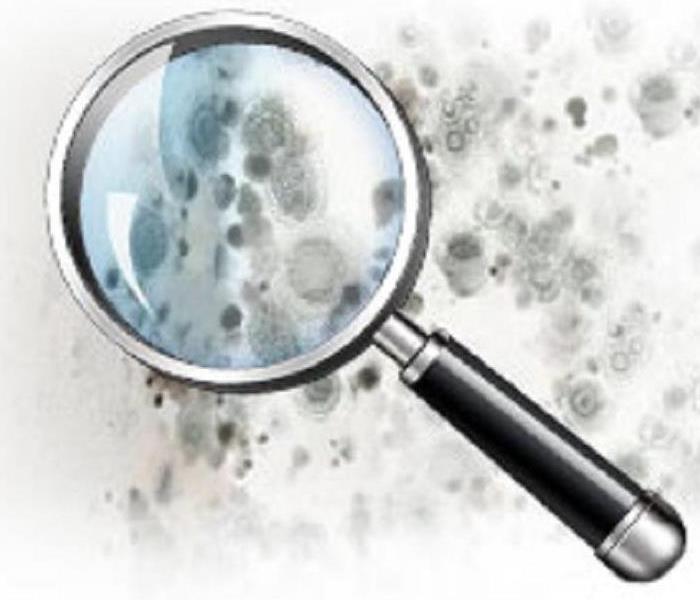 Top Hidden Places Where Mold May Grow In Your Indiana Home
Top Hidden Places Where Mold May Grow In Your Indiana Home
While there are common places where most people find mold, like around showers and tubs, there are many places in a home or business where mold be hidden. It’s these hidden areas that can lead to further damage from mold which is why it’s important to check them on a regular basis for any signs of moisture or condensation. In no particular order, here are the top places where mold can grow in a home:
- Crawl Spaces
Most homeowners never look into their crawl spaces but they might want to. Crawl spaces can easily collect moisture from water seeping through the foundation to moisture rising from the ground. A crawl space should have a vapor barrier on the ground to keep moisture from rising up. A crawl space also need adequate ventilation to allow any moisture that may collect to flow out. Failure to keep the moisture out from your crawl space can result in mold growth on the exposed framing of your home. The mold can eventually lead to excessive damage to all wood surfaces and make its way into the home.
- Basements
Basements are similar to crawl spaces but the fact that they are open and exposed to the rest of the house, can result in mold spreading quickly throughout your home via the air ducts and open doors. If your basement smells musty, then you either have mold growth already happening or the high possibility of it occurring. Due to the fact that many basements are furnished and carpeted, there are more areas in a basement that are perceptible to mold growth when compared to a crawl space.
- Bathrooms
A good ventilation fan is important in a bathroom not for the odor issues but the moisture issues. This is especially true with bathrooms where there are showers in them. While everybody loves a hot shower, a hot shower also creates a large amount of moisture that can lead to mold growth. Another area where mold may grow is behind toilets and under sinks with cabinets. Moisture can condensate on the toilet tank and wall causing mold to form on the wall.
- Under the Refrigerator
Some refrigerators have drip pans where water can collect. If dust or debris get into the drip pan, mold can start to grow. Water can also leak from the water line or drip from the cooling coils. It’s a good idea to check every few months as well as keep it clean by sweeping and vacuuming on a regular basis.
- Around the Washing Machine
The washing machine and the dryer are both susceptible to mold growth. If the dryer vent hose does not properly vent out the steam from the drying clothes, it can accumulate in the hose or around the back of the dryer causing mold to grow. Washing machines can also leak and drip down under the machine where dust can gather creating the perfect home for mold growth. Just like the refrigerator, it’s important to keep the areas clean and check underneath them often.
Top Ways to Reduce Mold Growth In Your Home
So now that you know where mold growth can happen, how can you reduce the likelihood of mold growing in your home. As stated above, it’s important to keep your home clean of dust by sweeping and vacuuming on a regular basis. While dust doesn’t necessarily cause mold to grow, dust along with moisture can.
The most important thing to reduce mold growth from happening in your home is to control and eliminate any moisture problems in your home. Check for leaks and condensation problems around sinks, appliances, and air conditioning units. If you have a musty basement, ensure that your sump pump is operating properly. You may also want to consider a dehumidifier to reduce the moisture in the air. If you have water that is seeping in from the basement walls or crawl space foundation, you’ll want to look at the drainage around your home.
Mold Remediation in Indianapolis, Indiana
If you should experience mold growth and mold damage to your Indianapolis-area home or business, call the mold remediation professionals at SERVPRO of Indianapolis West at 317.243.3149. The professionals at SERVPRO of Indianapolis West have the specialized equipment, professional training, and certifications to quickly treat and remediate mold in your home or business.
Can Mold Grow In Air Ducts? Can It Make You Sick?
6/17/2017 (Permalink)
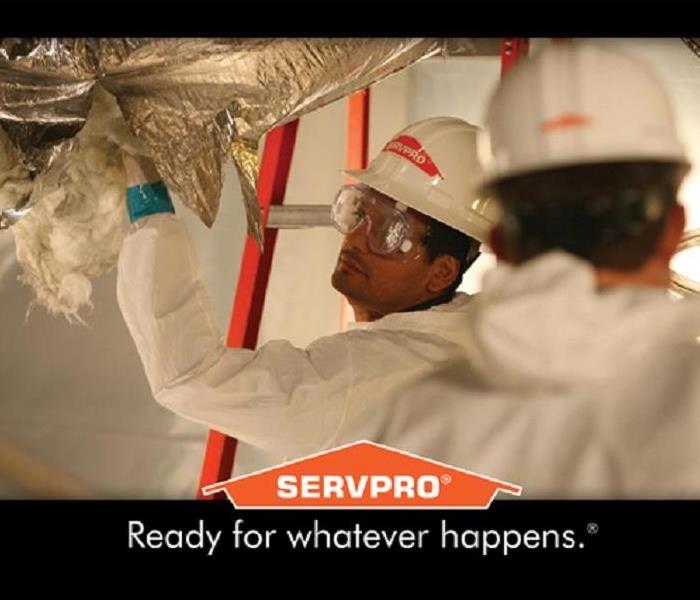 Can mold grow in your heating and cooling ducts?
Can mold grow in your heating and cooling ducts?
Air ducts can hide mold and dust that can make you and your family sick. If you’ve never had your air ducts cleaned, then you may want to have them cleaned. If you are changing the furnace filter often due to the filters getting dirty and clogged, then you will probably want to get the air ducts cleaned professionally. If your ducts have a musty odor smell to them, then you may have mold growth that you will want to get treated right away.
The EPA actually recommends that you check the air ducts prior to the heating season for excessive dust to protect against carbon monoxide poisoning. Another symptom of dirty air ducts is household allergies or unexplained illnesses. In the end, if you have lived in your home for many years, the air ducts have probably accumulated dust and debris over time. The furnace filters will only be able to collect so much of the dust.
Once you have a professional clean your air ducts, you should follow some simple steps to keep the ducts cleaner over time. You should use the highest efficiency filters to collect the most dust and debris. You should also change the air filters on a regular basis to keep them from getting clogged and inefficient.
If you have construction going on in your home where there is a lot of dust, seal off any return registers near the area to keep the ducts from getting contaminated and dirty. Also, cleaning and vacuuming your home on a regular basis can help keep the dust out of the air and out of your air ducts.
If the air ducts in your home are dirty, smell musty, or are causing allergies in your household, call the mold and cleaning experts at SERVPRO of Indianapolis West at 317-243-3149. At SERVPRO of Indianapolis West, we have specialized equipment, professional training, and certifications that allow us to remediate any mold that may be growing in your air ducts.
Finding Mold In Your Indiana Home
5/1/2017 (Permalink)
 Moisture problems can lead to mold problems.
Moisture problems can lead to mold problems.
With all the rain lately, you may have discovered mold growing in or around your home. Mold is a sign of a moisture problem that needs to be addressed to prevent mold from growing in the future. The mold itself can be especially dangerous to your health and should be removed and treated by mold remediation professionals.
Moisture Is Molds Friend
Mold happens as a result of excessive moisture. While mold out in the woods is perfectly fine, mold in your home is not a good thing. Moisture in your home can happen as a result of a leaky pipe, cracks in the foundation, cracks around your door or windows, poorly ventilated bathroom, and a damp basement or crawlspace to name a few. Due to all the rain in Spring is when most homeowners discover moisture problems. It’s important to address the moisture problems quickly, otherwise, mold can start to grow causing even further damage to your home.
Address the Moisture Problem
If your bathroom or basement or crawl space smell musty, then you probably have a moisture problem. While a dehumidifier may remove some moisture from a basement, you really want to identify what is causing the excessive moisture and fix the root of the problem. Moisture in a basement and crawl space can be caused by poor drainage from your home’s perimeter. It can also be caused by cracks in your foundation, leaky pipes, or condensation from poorly insulated pipes.
Moisture in a bathroom is usually caused by poor ventilation. After taking a shower, it is recommended to open the bathroom door to allow the excessive moisture to escape and air out of the bathroom. You may also want to make sure the exhaust fan is working properly and running when taking a shower.
By addressing the moisture problem and preventing it, you can greatly reduce the risk of mold from growing in your home in the future. Even if you don’t spot any mold around a moisture problem, it is still a good idea to have mold remediation professionals, like SERVPRO, examine your home for mold spores.
Mold Remediation
If you spot mold in your home, it is highly recommended to call SERVPRO of Indianapolis West mold experts. Our professionals will inspect, assess, and remediate your mold problem. The first step in mold remediation is fixing the moisture problem as mentioned earlier. The next step is to contain the mold and keep it from growing further. Once the mold is contained, it is removed along with the mold-infested materials like drywall and insulation.
It’s important to note that mold spores are microscopic and naturally occurring inside and outside a home. Mold spores are not dangerous and cannot be removed completely. However, when mold spores are exposed to moisture they can quickly grow into mold colonies which can cause lots of health problems. When this happens, you should call mold remediation pros like SERVPRO of Indianapolis West to remediate the mold problem.
If you should spot mold in your home, call the mold remediation experts at SERVPRO of Indianapolis West at 317-243-3149 for 24-hour emergency service. At SERVPRO of Indianapolis West, we have specialized equipment, professional training, and certifications that allow us to restore your home to its pre-mold condition.
Finding Mold In Your Indianapolis Home
4/26/2016 (Permalink)
 Mold mitigation in Indianapolis, IN
Mold mitigation in Indianapolis, IN
We’ve all seen and experienced mold in our lives. We’ve seen it grow on bread and old food that’s been in the fridge far past its prime. We’ve seen mold and mildew stains in the tile grout in our bathrooms. It’s these types of mold that are easy to spot and somewhat easy to clean and remove. But there are areas of the home that may be hiding mold that you may not spot right away. So how do you spot it before it gets out of hand and potentially causes health problems?
Smelling Mold
Mold has a distinct smell that is not natural inside of a home. It smells like a damp forest or a musty smell of dirt. You may have smelled it in an old basement that isn’t properly waterproofed. If you smell that musty odor in your Indianapolis home, then you most likely have mold growing somewhere nearby. Outside of the basement, you may smell the odor of mold near bathrooms, kitchens, and exterior walls. If the smell it throughout the house, you may have mold growing in your air ducts. Other areas where mold may grow that you may not be able to see easily is in crawl spaces, in attics and inside the walls.
Spotting Mold
You’ve probably seen mold, also known as mildew, around your bathtub. It’s usually black spots or splotches that usually grows in the tile grout since the grout is porous and allows the mold spores to thrive until you clean them. You can also find mildew on outside wood decks that don’t get much sun. If you smell mold in the basement, take a flashlight and check all the walls, near the sump pump, behind the water heater, and other areas that may be damp for signs of mold. In a crawlspace, you may find signs of mold on the exposed wood floor joists of the floor above. In walls, mold will grow on the wood, insulation and drywall.
Feeling Sick from Mold
Sometimes you won’t see the mold or smell it. Instead, you may be feeling a mold infestation in the form of a health problem. A hidden mold problem in a home can cause congestion, watering eyes, listless, breathing problems and other allergy-type symptoms. Prolonged exposure to mold, especially more toxic molds, can cause severe health problems. If you are experiencing symptoms that can’t be diagnosed, you may inquire about having a mold inspection of your home.
Preventing Mold
Mold loves damp areas outside and inside your home. To reduce the chance of mold growing in your home, you should keep the humidity in your home below 60%. Also, check and fix all exposed water pipes and drain pipes for leaks or condensation. Check your roof for signs of a roof leak like a water stain on a ceiling, damp insulation, and water stains in the attic. If your basement is too damp, you may want to invest in a dehumidifier to reduce the chances of mold growing down there. And lastly, make sure your gutters are working properly and directing water away from your home. This can reduce the chance of water seeping into the crawlspace or basement.
Cleaning Up Mold
If you find mold in your home or suspect there might be mold hidden in your home, call SERVPRO Indianapolis West as soon as possible before the mold spreads. Our mold remediation professionals have the training, equipment, and expertise to handle even the worst mold problem. We can inspect and test for all types of mold. If mold is spotted, we will use advanced mold remediation techniques to remediate the mold in your Indianapolis home.
Our mold remediation experts have treated homes and businesses for mold around the Indianapolis area for years including Plainfield, Avon, and Brownsburg. You can trust us for all your mold remediation as well as water and fire damage repair and restoration services.






 24/7 Emergency Service
24/7 Emergency Service













